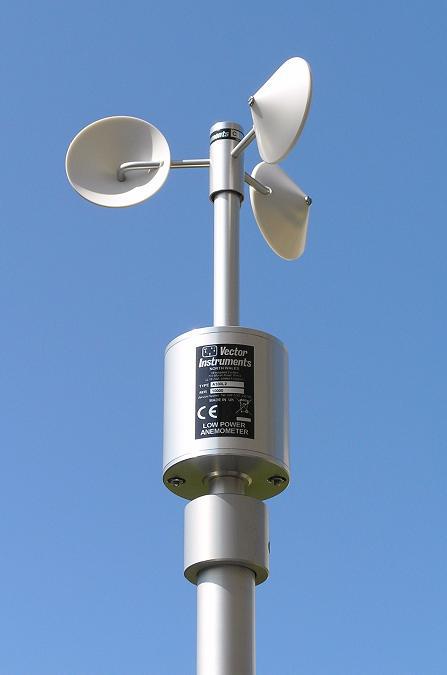Leading Attributes to Try To Find in an Efficient Anemometer for Accurate Wind Dimension
Leading Attributes to Try To Find in an Efficient Anemometer for Accurate Wind Dimension
Blog Article
Anemometers Introduced: Comprehending Their Importance in Environmental Surveillance and Security Procedures
The duty of anemometers in ecological tracking and security measures is frequently underestimated, yet their significance is indisputable. From meteorology to aeronautics safety and security, anemometers play an important duty in giving accurate data that informs decision-making procedures and enhances total safety and security.
History of Anemometers
The advancement of anemometers can be traced back to the old worlds where fundamental wind gauging gadgets were first utilized. These early wind measurement devices laid the foundation for the growth of much more sophisticated anemometers gradually. Among the earliest recognized anemometers was the hemispherical mug anemometer designed by Leon Battista Alberti in the 15th century. This design was composed of 4 hemispherical mugs that collected wind power, supplying a dimension of its strength based on the rate of turning.
In the 18th century, the distinguished scientist John Thomas Romney Robinson presented the Robinson anemometer, which featured four hemispherical mugs installed on horizontal arms that extended from a central axis. This design became a standard in meteorological dimensions as a result of its accuracy and reliability. For many years, improvements in technology led to the development of more contemporary anemometers, consisting of ultrasonic anemometers and laser Doppler anemometers, providing raised precision and performance in determining wind rate and instructions. The background of anemometers showcases an exceptional trip of innovation and development in the field of meteorology.
Types of Anemometers
Throughout the field of meteorology, different kinds of anemometers have actually been established to precisely determine wind rate and instructions. One of the most usual type is the mug anemometer, which includes three or 4 mugs placed on horizontal arms that rotate with the wind. As the mugs spin, the speed at which they rotate is directly proportional to the wind rate. One more extensively made use of kind is the vane anemometer, which includes a tail or fin that aligns itself with the wind instructions. This placement permits the gadget to figure out the wind instructions. Sonic anemometers make use of ultrasonic signals to gauge wind rate and direction precisely. They are typically used in study applications due to their high precision. Hot-wire anemometers run based upon the concept that the cooling impact of wind on a heated cable is symmetrical to the wind rate. These anemometers are suitable for determining reduced wind speeds with high precision. Each sort of anemometer has its staminas and is chosen based on the certain demands of the monitoring job at hand.
Applications in Meteorology
Having actually discussed the different kinds of anemometers utilized in weather forecasting for measuring wind rate and instructions, it is necessary to explore their useful applications in the field. Anemometers play an essential function in meteorology by offering precise and real-time information on wind conditions (anemometer). Meteorologists utilize anemometers to keep an eye on wind speed and instructions to anticipate weather patterns, issue warnings for serious climate occasions like tornadoes, tornados, and typhoons, and examine weather for air travel safety
In weather forecasting, anemometers help in recognizing regional and neighborhood wind patterns, which are essential for predicting weather condition adjustments and figuring out weather patterns. These devices are also made use of in research to examine microclimates, metropolitan heat islands, and air pollution dispersion. Additionally, anemometers are employed in agriculture to maximize crop monitoring practices, such as irrigation and chemical application, based upon wind conditions.
Importance in Aeronautics Security
An integral element of making certain aviation safety lies in the meticulous tracking of wind conditions making use of anemometers. Anemometers play a crucial role in aeronautics by offering real-time data on wind speed and direction, helping pilots in making informed decisions throughout trip, landing, and liftoff. Uncertain and strong winds can substantially impact aircraft procedures, making it essential for air travel authorities to depend on accurate wind dimensions to make certain the safety and security of guests and staff.

In the dynamic environment of aeronautics, where even minor changes in wind rate and direction can have profound effects, anemometers stand as essential tools for promoting risk-free and secure flight.
Duty in Environmental Study
Anemometers play an important duty in ecological study by providing essential information on wind rate and direction. By properly gauging wind characteristics, anemometers assist researchers assess the activity of toxins in the air, examine the effect of industrial exhausts, and anticipate the spread of impurities in the setting.


Final Thought
Finally, anemometers have played a critical role in ecological monitoring and precaution. With a rich background and different kinds available, these devices have actually been commonly used in meteorology, aeronautics safety, and environmental research. Understanding the importance of anemometers is important for accurately determining wind speed and direction, which is important for predicting weather patterns, making sure secure air travel operations, and conducting environmental research studies - anemometer. Their payments to these fields can not be undervalued.
One of the earliest well-known anemometers was the hemispherical mug anemometer created by Leon Battista Alberti in the 15th century. Over the years, developments in technology led to the growth of more modern-day anemometers, consisting of ultrasonic anemometers and laser Doppler anemometers, offering boosted precision and performance in measuring wind speed and instructions. Hot-wire anemometers operate based on the principle that the cooling effect of wind on a heated cable is proportional to the wind rate. Meteorologists use anemometers to keep track of wind speed and instructions to forecast weather patterns, issue warnings for serious weather condition occasions like tornados, Website twisters, and typhoons, and analyze atmospheric problems for aeronautics safety.
Understanding the value of anemometers is necessary for accurately measuring wind speed and direction, which is essential for predicting weather condition patterns, making certain safe aviation procedures, why not try these out and conducting ecological studies. (anemometer)
Report this page